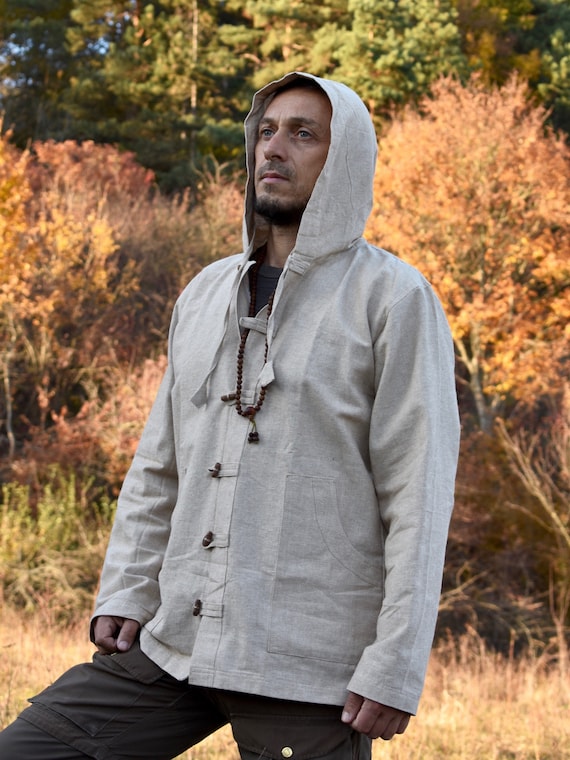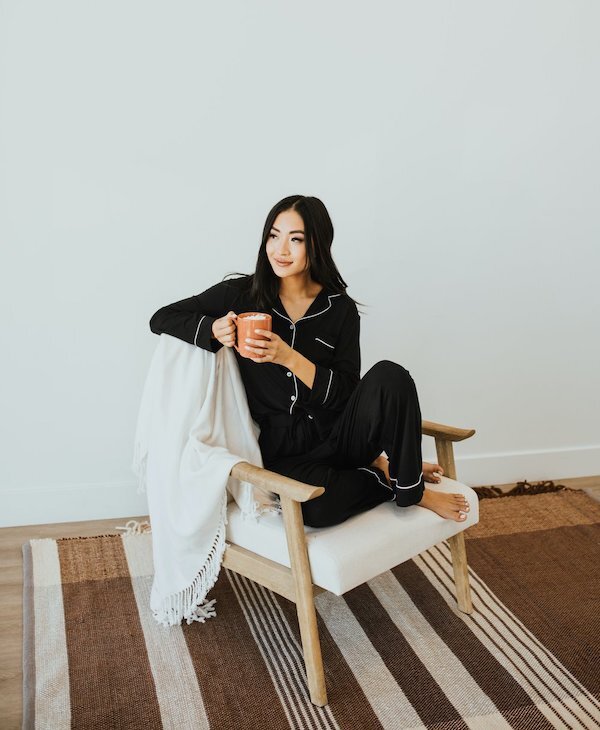Handy Ideas For Deciding On Bamboo Clothes
Wiki Article
What Are The Advantages Hemp Clothing Made Of Low-Impact Fibres Offers For The Environment.
Clothing made of low-impact hemp fiber has numerous environmental benefits compared to other clothing materials. This is the case for clothing made using synthetic fibers or traditional cotton. Hemp clothing is environmentally friendly. Hemp grows quickly and requires less chemicals, water, and pesticides than other plants. Hemp is able to adapt to a variety of soil types and climates and climates, which decreases the need for agricultural chemical.
Hemp is less water-intensive compared to cotton. Cotton is known for its heavy use of water. Hemp is an efficient use of water for the production of clothing.
There are no herbicides or pesticides- Hemp can be grown without the need for synthetic herbicides or pesticides in most cases, reducing the environmental impact associated with chemical farming.
Hemp is beneficial for soil health. The roots are deep and stop erosion and compaction. It also leaves the soil in better condition to allow for future cropping.
Biodegradability Biodegradability Hemp fibers degrade and biodegrade naturally in time. This reduces the environmental impact of textile waste. In contrast to synthetic fibers such as polyester that can take hundreds or even thousands of years to break down.
Low carbon footprint - Hemp fibers have a smaller carbon footprint than synthetic materials. Hemp can also be a carbon sink, as it can absorb CO2 from the atmosphere while expanding.
Hemp clothing's durability and long-lasting are well-known. The best hemp clothing will last for an extended time, decreasing the necessity to replace them often.
Natural Pest Resistance Hemp plants have natural resistance to many pests, reducing the need for chemical methods to control pests.
Versatility- Hemp can be utilized for a wide range of textiles, including clothing, bags and accessories, making it a scalable and sustainable option for textiles and fashion.
Regenerative Agriculture- Some sustainable farming practices integrate hemp into regenerative agriculture systems that seek to improve and restore ecosystems while producing crops. It can also have positive impacts on the environment.
While hemp offers many environmental benefits, its overall sustainability is also affected by other factors including transportation, dyeing and consumer behavior. Additionally, as with every industry, there could be variations in production practices and standards. Therefore, it's beneficial to look for certified hemp clothing that is organic or sustainable alternatives to get the best environmental benefits. View the best I thought about this for hemp clothes for site recommendations including hemp textiles, wholesale hemp fabric, hemp active wear, patagonia hemp jacket, 100 hemp t shirt, patagonia volley shorts, nomad hemp clothing, jungmaven sweatshirt, hemp baja hoodie, hemp trousers and more.

What Makes Hemp Fibers Water-Wicking And Breathable?
Hemp fibers possess unique structural and chemical properties that make them breathable, moisture-wicking and thermoregulatory. These characteristics can be explained by the following factors- Microscopical Structure- Hemp has a porous and hollow structure, which allows for air circulation throughout the fibers. This natural porosity makes hemp fabrics extremely air-tight. When it is woven into fabric the structure lets air flow through. This improves circulation and stops the accumulation of moisture and heat on the skin.
Moisture Absorption and Wicking- Hemp fibers are hydrophilic, which means they possess a strong affinity to water and are able to absorb moisture readily. Wearing hemp clothing will help to absorb sweat and moisture, which can keep you from feeling wet. They also spread moisture across a wider surface area so that it can evaporate more quickly. This moisture-wicking quality keeps you dry and comfortable when exercising or during hot weather.
Hemp fibres have natural insulation properties. They are able to trap warmth close to the body and offer warmth in cold weather. In the summer, they let excess water and heat escape, which helps you to cool down. The thermoregulating properties inherent to hemp allow hemp clothing to be suitable for a variety of temperatures.
Hemp fibres possess antimicrobial properties which aid in preventing the growth of bacteria that cause odors. This attribute contributes to the freshness of hemp clothing even during physical activity.
Hemp clothing is durable and long-lasting. It is able to be washed and worn repeatedly without loosing its breathability or ability to wick moisture away. This prolongs the life of hemp clothing, decreasing their requirement to replace them and reducing the environmental impact.
UV Protection- Hemp fibers provide a amount of natural UV protection, protecting the skin from harmful ultraviolet radiation. The UV-blocking properties add to hemp clothing’s versatility, making it perfect for outdoor activity.
These properties are inherent in hemp fibers, and do not depend on chemical treatments or additives. Hemp has inherent properties that make it a sustainable and comfortable option for clothing. These qualities are also preserved when hemp fibers are transformed into textiles. They are the most sought-after materials for clothing that is eco-friendly. Take a look at the top rated recommended reading for website tips including jungmaven clothing, hemp coat, hemp sportswear, hemp tees wholesale, 100 hemp shirt, hemp sweatpants, hemp fabric clothing, hemp denim, hemp clothing, hemp sweatpants and more.

What are the major differences between hemp and bamboo fibers
There are numerous distinctions between bamboo and hemp, including their unique characteristics. Here are a few of the most significant differences between bamboo and hemp fiber- 1. Plant Source-
Hemp- Hemp fibers are taken from the hemp stalks plant, specifically from the bast fibers on the outside. Hemp is an adaptable and rapid-growing plant that has been utilized in various ways for centuries.
Bamboo fibers are made of bamboo pulp. Bamboo is a fast-growing grass species known for its rapid renewal and long-term sustainability.
2. Fiber Characteristics
Hemp Fibers- Hemp fibers are known for their durability and strength. Hemp fibers are among the strongest natural fibers that soften after each wash, making them suitable for long-lasting textiles.
Bamboo Fibers- Bamboo fibers possess a silky, soft texture. The fibers are less strong than hemp, but they are also more fragile. However, they are highly prized for their comfort when used on the skin.
3. Texture and Feel-
Hemp- Hemp fabrics have an abrasive, textured feel in the natural state. While it can be an incredibly comfortable fabric, the texture is different from bamboo.
Bamboo fabric is silky-smooth and luxuriously supple. It's often described as feeling like a mixture of cotton and silk, making it highly comfortable to wear.
4. Dryness and Breathability-
Hemp- Hemp is naturally air-tight. It also absorbs moisture. They are a great way to keep cool during hot summer days.
Bamboo fibers also have the ability to absorb moisture and are highly air-tight. They have micro-gaps in them, which improve their ability to regulate temperature and humidity. This helps you stay at ease in all conditions.
5. Environmental Impact-
Hemp Hemp is a kind of fiber that's considered eco-friendly due to its requirement for very little water, grows rapidly and has a good resistance to insects. It also decreases pesticide and herbicide use. It can also remove carbon dioxide from the atmosphere when it expands.
Bamboo is renowned for being eco-friendly. It is extremely durable, grows rapidly and needs very little water. Moso is one of the most sustainable bamboo varieties.
6. Processing-
Hemp- Hemp fibres need an extensive process to separate the inner bast fibers from the woody core inside. Processing can include decoration, retting, or mechanical separation.
Bamboo Fibers- Bamboo fibers are made through a chemcial process referred to as the viscose/rayon process. This process involves chemically breaking down bamboo pulp. Closed-loop systems can be used to reduce chemical waste in certain bamboo textiles.
7. Versatility-
Hemp- Hemp is versatile It has many uses, such as construction materials, clothing, textiles, and more.
Bamboo- Bamboo fibres are used primarily in clothing and textiles however they can be found in other items like bedding, towels and even towels.
In the end, both hemp and bamboo offer unique qualities and sustainability advantages. It is dependent on the qualities you're looking for in a material, and how environmentally conscious you are. Check out the top rated good on bamboo clothes for site recommendations including bamboo trousers mens, faceplant pajamas, bamboo sweater, bamboo cay shirts, cozy earth clothes, bamboo pants mens, ladies bamboo pants, dixxon bamboo shirt, womens bamboo t shirts, bamboo shirt and more.
